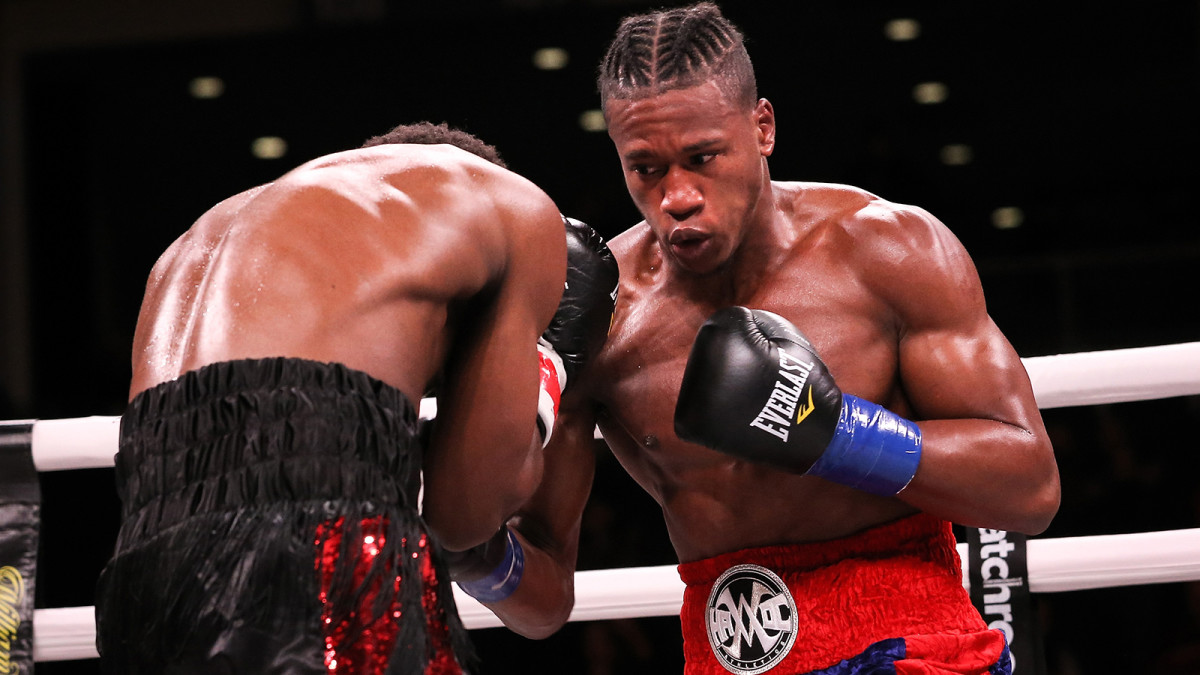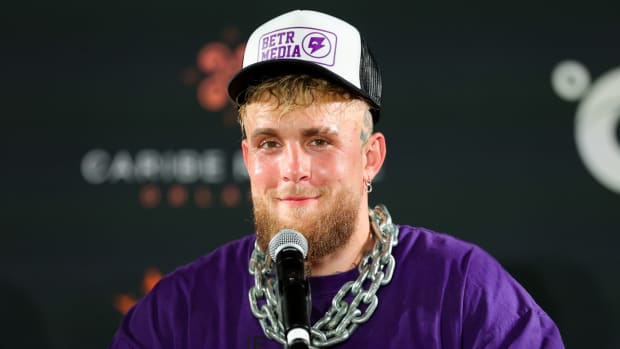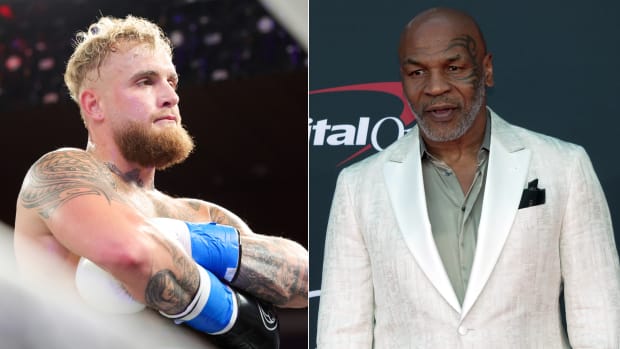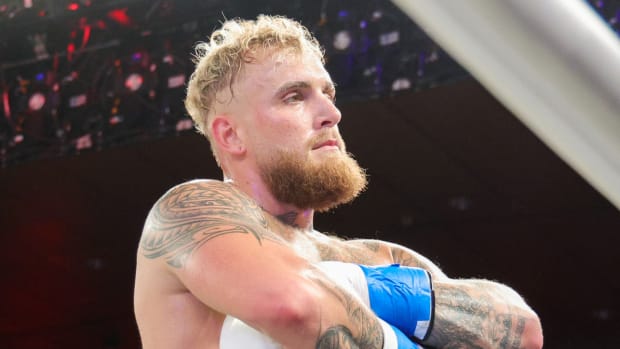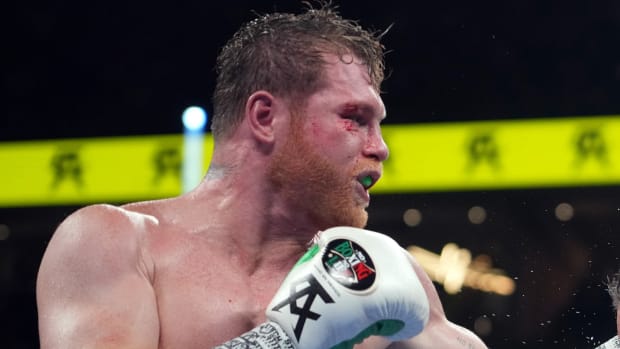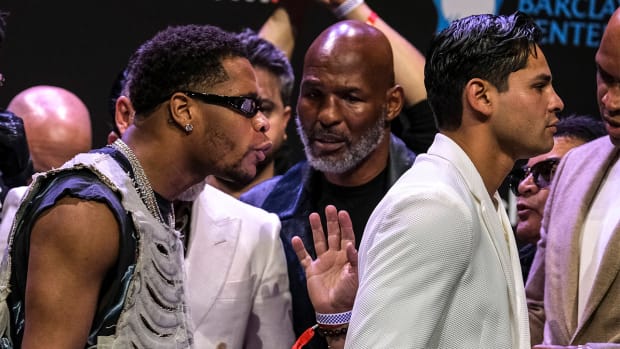Boxing's Latest Tragedy Forces the Question: Why Be a Part of It?
CHICAGO — Patrick Day went down, and for a moment, you cheered.
Patrick Day stayed down, and if you’re reading this today, you’re probably still stunned.
This has been a rough stretch for boxing. In July, Maxim Dadashev, a rising 140-pound prospect, died from injuries sustained in a knockout loss to Subriel Matias. That same month another fighter, Hugo Alfredo Santillán, collapsed after a physical 135-pound fight with Eduardo Javier Abreu. He suffered three heart attacks in the ensuing days before passing.
On Saturday, the sport absorbed another tragedy. Day, a fringe 154-pound prospect, faced Charles Conwell, a 2016 U.S. Olympian looking to add a notable name to his résumé. For nine rounds, Conwell controlled the fight. In the tenth, Conwell landed a chopping overhand right that caught Day behind the ear. Moments later, a crushing left hook sent Day to the canvas. Instantly, Day’s eyes rolled back. His body started twitching. He was taken away by an ambulance, where he began seizing.
Day was rushed to Northwestern Memorial hospital. He underwent emergency surgery and remains in a coma and in extremely critical condition, per his promoter, Lou DiBella.
He is literally fighting for his life.
For those involved in boxing—fighters, managers, promoters, even media—you try to makes sense of situations like this. It’s not shocking. There’s no doctor in the world that will tell you boxing is safe. It’s not new. Benny Peret died from injuries sustained in a fight with Emile Griffith, in 1962. In 1982, Duk Koo Kim died days after a brutal, 14-round war with Ray Mancini. In 2016, I co-produced a documentary on the 2011 fight between Sergey Kovalev and Roman Simakov, which resulted in Simakov passing away. Earlier this year, I worked on an SI TV piece on Daniel Franco’s fight to recover from a traumatic brain injury he suffered in 2017.
It happens, and will continue to happen.
So why be a part of it?
There’s a bloodthirst in boxing. We’re all guilty of it. We cheer wars, like last weekend’s gripping battle between Gennadiy Golovkin and Sergiy Derevyanchenko. We boo tactical boxing performances, even dominant ones, like Dmitry Bivol’s lopsided decision win over Lenin Castillo, a masterful effort by Bivol—but one that saw very little action.
It’s a sweet science, but one few have any real appreciation for.
We ask fighters to take risks. We demand it. I’m guilty of it. For months, I’ve had a few public back and forths with Demetrius Andrade, a middleweight titleholder and one of the best pure boxers in the sport. Andrade, I’ve contended, has missed opportunities to make strong statements. In June, Andrade had one of those opportunities, against Maciej Sulecki. In the first round, Andrade dropped Sulecki. He had him backing up. He had him hurt. If Andrade came out in the second round with the same aggressiveness, I thought he had a chance to finish him. Instead, Andrade pulled back, content to outbox Sulecki en route to a 12-round decision.
I’ve argued with Andrade about this. I’ve said that if he wants the big fights against Golovkin or Canelo Alvarez, he has to do something spectacular. Andrade counters by saying he is doing something spectacular in outclassing highly ranked middleweights. He said something else, too, something that has stuck with me: You want me to get in a war, Andrade said, but are you going to come visit me in the hospital?
And he’s right. Boxing fans don’t care much about the fallout from a tough fight. They don’t care that fighters' careers can be lengthened by avoiding the type of wars people crave and shortened by participating in them. It doesn’t resonate with them that repeated head trauma can contribute to causing Parkinson’s disease, as it’s believed to have with Muhammad Ali and Freddie Roach. They don’t see the long term impact concussions have on fighters, how it changes a fighter, most of who are done with the sport well before they reach 40.
There have been calls to ban boxing, and there will continue to be. I’ve wrestled with that. I love boxing. I was a latecomer to the sport. I was strictly an NBA writer when I got to Sports Illustrated in 2003. Looking for opportunities to write for the magazine, I volunteered to pick up some east coast boxing assignments. A few staff shakeups later, and I became the national boxing writer. Today, I’m fully immersed, both with SI and as a member of DAZN’s broadcast team.
I understand the danger in the sport. You play basketball, hockey, soccer, even football. You don’t play boxing. But when I think of the counterargument as to why boxing should exist, it’s this: Boxing saves more lives than it takes.
Boxing isn’t a middle class sport. It’s not a even lower class sport. Boxers are often men and women who grew up below the poverty line. They fight in the ring as part of a fight for survival outside of it. The names in the stories change, but the narrative remains the same. Floyd Mayweather, from the streets of Grand Rapids, Michigan, whose father once used him as a human shield; Manny Pacquiao, in General Santos City, in the Philippines, where he grew up fighting for as little as 100 pesos—the equivalent of about $2—just to be able to afford the rice needed to feed him; Oscar De La Hoya, who for years kept a laminated food stamp in his wallet, a reminder of what life was like growing up in East Los Angeles.
Where would these fighters be without boxing? Basketball, football, hockey—these weren’t realistic alternatives. Mayweather, Pacquiao and De La Hoya are the super success stories, but there are countless other fighters who have used boxing as a vehicle to a better life.
On Sunday, I floated my theory on boxing to Sergio Mora, a former 154-pound champion and my broadcast partner on DAZN. Mora has a similar backstory: He grew up in East LA, raised by his mother, who worked in a warehouse to make ends meet. His opportunity came when he earned a spot on NBC’s reality series, The Contender. He won that tournament—and the $1 million prize that came with it. Boxing, Mora told me, was his way out.
“I agree with you 100%,” Mora said. “It saves lives. And not just from death. Boxing helps you make something of yourself. So you can raise a family. To have self-respect. To not fall victim to drugs or wind up in jail. It might sound f---ed up, but death isn’t the worst thing that can happen to a person. Boxing has helped so many to not become another statistic.”
Boxing will never be safe. But I’m reminded in these moments that there are still many things that can be done to make it safer. Drug testing, for one. No state should license a fighter—and no sanctioning body should sanction a fight— unless they are enrolled in enhanced, year-round drug testing. Fighters should have complete medical care. Dana White, the UFC founder who intends to jump into boxing in the coming months, takes pride in UFC’s medical standards. The UFC, White told the SI Boxing Podcast recently, goes “overboard with medicals.” The UFC, says White, does everything they are required to do “and a whole lot more.”
Boxing should do the same. MRI’s, at least two per year. Real, uncapped health insurance. Extended medical suspensions for fighters who have been knocked out or are in tough fights. Day was licensed by the Illinois Athletic Commission. But just over three months earlier he was in a tough fight with another heavy handed prospect, Carlos Adames. He wasn’t knocked out, but in the final few rounds he took a pretty good beating. Perhaps fights like that, which come so recent, should give athletic commissions reason to reconsider approving a fight.
Fighters can be leaders on this issue. Canelo, Deontay Wilder and Terence Crawford are among the elite who have megaphones in the sport, whose words carry weight. Media members—this one included—can do more to call out problems when they see them. Boxing shouldn’t be banned because of these recent tragedies. But that doesn’t mean it shouldn’t evolve, either.
